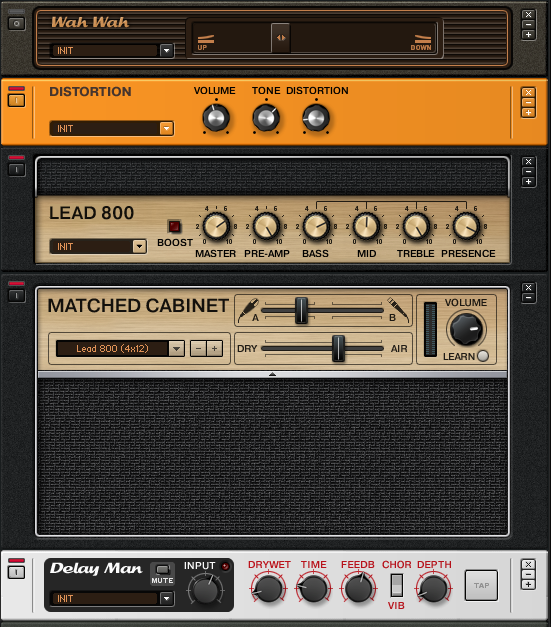Guitar Rig 3 is one of several amp modeling software applications that I use on my computer. Of all the apps I use, Guitar Rig nails that crunchy blues sound that I enjoy so much with players like Slash. Blues, but with a definite edge that can only come from a JCM 800.
Guitar Rig includes 12 amps, 17 guitar and six bass cabinets, four rotary speakers, nine microphones with adjustable positioning and 44 effects. That’s a lot of gear.
I know there are a lot of people that scoff at digital amp modeling and that’s fine. Personally, when I’m looking for the right tone to use on a song I’m writing, I find it much easier to work with an app like Guitar Rig than to purchase all of the analog gear that’s included with this software.
You would certainly be talking about a lot of money.
I thought I’d give you a couple of tips for creating a preset in Guitar Rig 3. I’m going to do a Slash-style preset, because he is one of my favorite guitarists and I think he has great tone.
The tips I’m going to give you can be used for digitally recreating the tone of any guitarist. Mostly it takes patience to get things dialed in properly. Be calm and don’t think it all has to be done in one setting.
The first thing you have to do is get the thought out of your head that you throw in an amp, turn everything up to 10 and you’re done. It doesn’t work like that. Unless of course, you just want a ton of feedback and a completely unrecognizable tone.
You also don’t have to choose the same model amp that your favorite guitarist uses. Just because Slash uses Marshall, doesn’t mean I have to choose it in software. Try out a couple of different amps and see what works best for the sound you are going for.
As it turns out, the Marshall JCM 800 model is the one that I like the best for this hard blues tone. Now, set all of the knobs on the amp on 5. You can begin strumming and adjusting wherever you feel most comfortable — personally, I start with the gain and go from there.
This can be a very tedious process, depending on how perfect you want it to be. I agree with those that say you should create your own sound, but having a tone you like is a good place to start.
After you finish with the amps, you can move to the cabinet and adjust the mic and air settings. These are personal settings. There is no right or wrong in any of this — chose what you think sounds good.
It’s at this point that I start to put in any effects I may want. I’m a big believer in letting the amp do the work, so I’m pretty stingy with effects.
I included the Guitar Rig 3 tone as a download. Feel free to grab it and see what you think.


